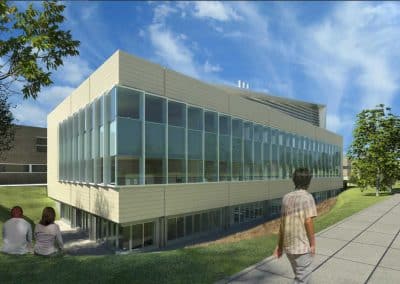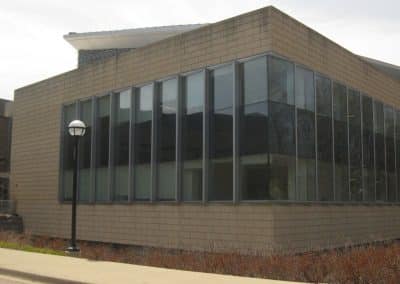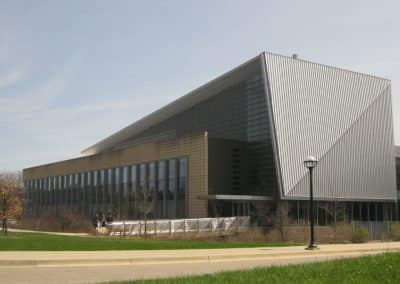GG Brown Hall Addition – University of Michigan
Project Location
Ann Arbor, Michigan
Awards
– 2016 AIA Michigan Building Award
– 2015 AIA Detroit Building Award
– 2014 SEA-MW Merit Award for New Construction $10M-$50M
Sustainability
– LEED Certification
Project Type
– Civic/Government
– Education
– Specialty Structures
Services
– New Construction
– Specialty Structures
A 3-story addition to the existing GG Brown Laboratories. The building was designed to strict standards for vibration to accommodate nanotechnology research.
The Project
The GG Brown project consists of a 63,000 SF, $47-million laboratory building addition for the University of Michigan Mechanical Engineering Department. The 3-story addition to the existing GG Brown Laboratories will house research space for nanotechnologies.
The Challenges
- The design was required to meet extremely strict standards for vibration on the elevated floors, and even tighter standards for the Ultra-Low Vibration Labs (ULVL) housed on the first-floor level.
- The unusual shape of the building included a feature wall hung from the roof. Behind the feature wall, a three-story atrium made the bracing the wall a challenge.

The Solutions
- To meet the strict vibration criteria at the upper levels, the slab thicknesses were increased to 7 inches and the beams in the lab areas were stiffened and offset from the beams in the adjacent floor areas. This served to limit vibration transfer from the corridors and changed the natural frequency of the lab floors. The vibration criteria for the ULVL were even more stringent than at the upper floors. As a result, the structure for these labs was isolated from the rest of the building. Foundations for the research chambers consist of a 6.5’ thick cast-in-place concrete mass. The optical tables used by the researchers are supported on large concrete piers supported directly on the mass. The floors around the tables are isolated from the piers and consist of a 12” – 18” thick cast-in-place concrete slab.
- The roof over the mechanical penthouse level is sloped, with the ridge running diagonally from the northwest corner to the southeast corner. The same roof material then folds down over the west wall and is suspended two floors above the ground. This west wall also had a “ridge” which ran from the bottom north corner to the top south corner. The lower part of the wall is perpendicular to the ground, and the upper part is canted slightly back toward the building. The wall is partially hung from two cantilevered beams at the roof level and partially supported from columns that extend to the ground. The wall is laterally braced by a system of horizontal and diagonal girts and wind columns.




